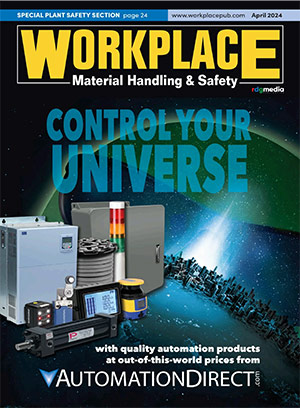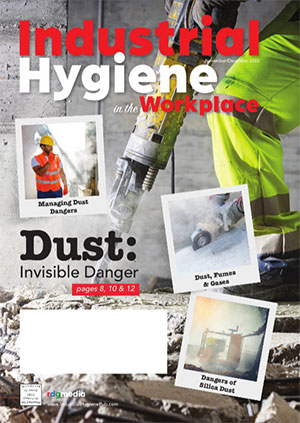Top Advantages of Industrial Steel Shelving
Contributor: Shelving + Rack Systems, Inc.

The best kind of shelving system to purchase depends on your warehouse’s layout, inventory and supply chain needs.
As a warehouse manager or shop foreman, industrial metal shelving offers you a heavy-duty and highly customizable solution to material handling issues, allowing you to maximize vertical space and efficiency. This is critical to ensuring that your stock is protected, visible and accessible.
What Kind of Shelving Do I Need?
The best kind of shelving system to purchase depends on your warehouse’s layout, inventory and supply chain needs. Heavy castings and automotive parts, such as engine blocks, place hugely different demands on a shelving unit relative to consumer electronics or apparel.
How your warehouse is laid out, including whether it’s automated, how much space you have to work with and other factors determine your operation’s most viable shelving options.
There are various shelving units to choose from, including industrial steel, single and double rivet, wire and more.
Advantages of Industrial Steel Shelving
Also called clip shelving, warehousing staff use industrial steel shelving to solve a wide variety of storage problems. As it’s easy to assemble and configured in multiple ways, it offers a diverse range of solutions to space management problems and storing inventory.
Steel shelving can take several forms, from pallet racks to display units, but regardless of how you decide to arrange it, the system has several significant benefits:
Durability
Steel shelving is strong enough to endure regular loading and unloading by forklifts and automated picking equipment, which may damage other shelving systems. It’s also inherently resistant to temperature extremes, although you should opt for corrosion-resistant finishes to ensure that humidity doesn’t cause rust or oxidation. Many steel shelving units are powder-coated, which protects the surface against moisture.
Strength
Steel shelving offers increased storage capacity relative to other shelving types. Heavier, larger items, such as machine parts, tools and dies, and bar stock are no challenge for this system. However, the downside of shelving that while it can support huge loads, it is also cumbersome. This is especially true of its closed variant.
Versatility
Clip shelving allows you to customize your shelving space to suit your warehousing needs, from installing drawers and cabinets to different kinds of dividers. This allows you to tailor the shelving unit to your specific inventory requirements. If you need to increase the unit’s weight capacity, you can add cross-bracing or other supports as needed.
Product Visibility
Metal shelving, particularly the open variety, increases product visibility for order pickers and forklift operators, allowing your warehouse or factory staff to see what they need when they need it. As your personnel can retrieve stock from all four sides, it also increases access.
Safe Product Storage
Steel shelving can protect delicate items, such as consumer electronics or instruments, from being damaged. This provides a much safer alternative to storage bins or placing the stock directly on the warehouse floor.
Other Types of Shelving
Several shelving systems have emerged in the search for the most economical storage solutions, all with their unique advantages and disadvantages. These include:
Wire Shelving
Composed of a wire mesh, wire shelving is a lightweight option for relatively small items. Not appropriate for heavy stock, wire shelving allows for air circulation, which can be useful for cold storage in supermarkets, restaurants and food manufacturing plants. It’s also easy to clean and is customizable. As it is lightweight and can be mounted on casters, wire shelving is available in either stationary or mobile configurations.
Rivet Shelving
This type uses rivets that lock into teardrop holes in upright posts to provide support for inventory. Single rivet shelving is suitable for commercial applications where the expected load does not exceed 300lbs. For industrial and warehouse applications, where the expected load is greater, double-rivet shelving is the preferred option, substituting thicker shelves and twice the structural support.
Should You Use Open or Closed Shelving?
Metal shelving units are available in either an open or closed configuration. Open shelving has no rear or side panels. This provides a general-purpose storage solution, allowing for easy stocking and retrieval of inventory. It’s also useful for visual confirmation of the shelves’ contents, increasing access to order pickers.
Closed shelving uses rear and side panels, which provide a combination of increased security and durability. Aside from protecting stock from damage, it also minimizes the accumulation of dust and moisture. However, closed shelving is more expensive and may not comply with building or fire codes. Check with your local and OSHA safety codes for information about the shelving type permitted in your facility. WMHS
This article first appeared on the Shelving + Rack Systems, Inc. website. https://www.srs-i.com/
Shelving + Rack Systems, Inc. prides itself on providing warehouse managers with storage and material handling solutions that fit their specific requirements. Call (855) 456-9229 for more information about its range of industrial steel shelves. Or schedule a free consultation and quote to discuss the best options for maximizing storage space.



